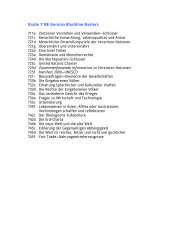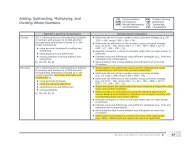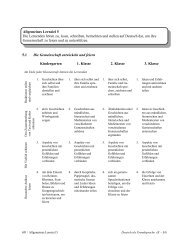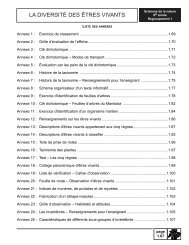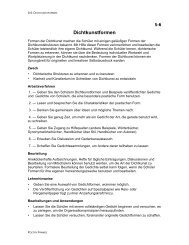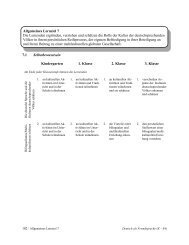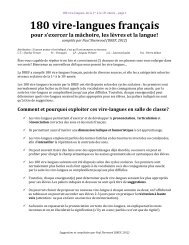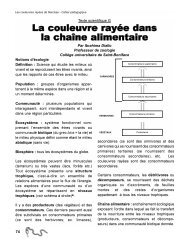Lesson 3: Anxiety and Depression
Lesson 3: Anxiety and Depression
Lesson 3: Anxiety and Depression
Create successful ePaper yourself
Turn your PDF publications into a flip-book with our unique Google optimized e-Paper software.
Background Information<br />
<strong>Anxiety</strong> Disorders<br />
<strong>Anxiety</strong>, or feeling anxious, describes a mood familiar to most of us, one that we may<br />
experience every day. <strong>Anxiety</strong> comes from a concern over lack of control over<br />
circumstances. In some cases being anxious <strong>and</strong> worrying over a problem may generate a<br />
solution. Normally, however, it will just result in negative thinking. When anxiety seems<br />
to come out of nowhere, is excessive, persists for many weeks without relief, or interferes<br />
with everyday life, it may not be an ordinary mood anymore. It may be an illness.<br />
Signs <strong>and</strong> Symptoms<br />
People with an anxiety disorder may have a number of common physical symptoms,<br />
including the following (Canadian Psychiatric Association; <strong>Anxiety</strong> Disorders Association<br />
of Manitoba; <strong>Anxiety</strong>BC):<br />
• shortness of breath ■ feelings of unreality<br />
• shakiness ■ irritability<br />
• muscle aches <strong>and</strong> tension ■ insomnia<br />
• tight chest ■ restlessness<br />
• racing heart ■ sweating <strong>and</strong> nausea<br />
• choking sensations ■ abdominal distress<br />
• numbness or tingling<br />
Emotionally, people with an anxiety disorder may feel short-tempered <strong>and</strong> apprehensive,<br />
fearing that bad things are about to happen.<br />
According to the <strong>Anxiety</strong> Disorders Association of Manitoba (ADAM), anxiety disorders<br />
are among the most common mental health problems. They can cause “significant<br />
personal <strong>and</strong> societal costs in terms of lost wages, decreased productivity, reduced quality<br />
of life <strong>and</strong> frequent use of health care services” (ADAM, Major <strong>Anxiety</strong> Disorders).<br />
The different types of anxiety disorders include generalized anxiety disorder, panic<br />
disorder, specific phobias, social anxiety disorder, obsessive compulsive disorder, <strong>and</strong><br />
post-traumatic stress disorder, which medical professionals would diagnose before<br />
providing treatment.<br />
_____________________________________________________________________________<br />
Module C, <strong>Lesson</strong> 3 227 •




